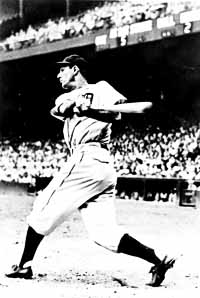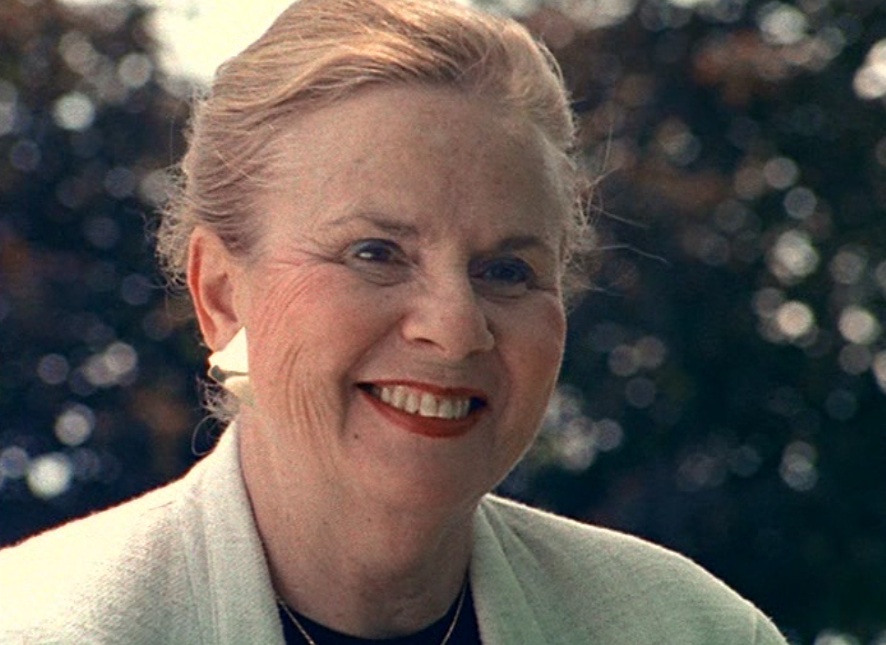Tuesday April 02, 2013
Q&A with Aviva Kempner about Hank Greenberg – Part I
In March 2000, in a hotel lobby in downtown Seattle, I interviewed director Aviva Kempner, who was visiting Seattle to promote her documentary “The Life and Times of Hank Greenberg,” which was showing at the Jewish Film Festival of Seattle. Here’s my review of the documentary and my profile of Ms. Kempner from back then.
This month, Ms. Kempner will be appearing with a friend, John Rosengren, author of “Hank Greenberg: Hero of Heroes,” at events in Washington, D.C. on April 4; in New York April 25; at the Yogi Berra Museum on April 26; and at the Jewish Community Center in New York on the evening of April 26. John’s full schedule can be found here.
What follows is the full Q&A with Ms. Kempner, edited and condensed.
There’s a scene in “Portnoy’s Complaint” that reminds me of what you do with immigrant parents and baseball in “The Life and Times of Hank Greenberg.” As a boy, Alexander Portnoy is at the park playing baseball with his father, who is calling out to him, “Okay, Big Shot Ballplayer.” But he’s gripping the bat with his hands reversed, and Alexander is overcome with sadness at how little his father, the great man in his life, knows. I’m curious if you tried to get Philip Roth for the documentary?
 I wanted to but he said he wouldn’t be filmed. He’s very reclusive. [Notices a man at a nearby table lighting a cigarette.] Is that a smoking area? I may have to move.
I wanted to but he said he wouldn’t be filmed. He’s very reclusive. [Notices a man at a nearby table lighting a cigarette.] Is that a smoking area? I may have to move.
What Roth writes about, which is the one thing I wanted on film, was how his grandfather, who was an Orthodox Jew, would get up every morning and pray. Do you know what tefillin is? Well, it’s a very Jewish thing. Orthodox Jews put on leather straps every morning. [Roth's] grandfather would lay tefillin every morning and pray and smell the leather straps. He would get up every morning, take his baseball mitt [smacks palm], and go like that.
That’s when I knew I was onto something. I had already been working on the film five years and when I read Philip Roth I realized that for the children of immigrants, and some immigrants themselves, baseball was the way you became American. It became a new religion.
Not just for Jews. This was true for Italian immigrants, Irish immigrants. That’s why I wanted the beginning of the film to be what baseball was to immigrants. Our parents spoke with accents, they could hardly understand the game. The scene in “The Pride of the Yankees” where Lou Gehrig’s mother, says “What are those pillows doing there?” with an accent.
A German accent.
It’s close enough to Yiddish. That and “Gentleman’s Agreement” were the first Hollywood clips I decided to use, and then after that it became a structure of my film.
Why use such clips?
Well, look it. I’m of the view that the most important source of footage in my film is the archival shots that were shown in the movie theaters: the MovieTone footage of the World Series and things. I paid an arm and a leg to get it and worked with my editor to craft it into the film.
But I’m also under the belief that feature films can be archival—can also connote an era or a feeling. When I’m talking about domestic anti-Semitism, well, I think “Gentleman’s Agreement” is the best and only great film out of Hollywood on domestic anti-Semitism [at the time]. That scene of checking into the hotel is a incredible personification of the social discrimination against Jews. There are other scenes where the Gregory Peck character uses the name Green or Greenberg to get access. Well, no one can tell me that when Laura Hobson wrote that book she wasn’t thinking of Hank.
Plus I can say that I have Gregory Peck in my film.
Any footage you heard about but couldn’t get?
We don’t know what we didn’t get. What I’m waiting to hear is … I’m going to be on this tour [for the documentary], and the film’s going to be out for the next year, and somebody’s going to come to me and say, “You know what I just found in my grandfather’s attic?”
There are a lot of stills I didn’t use. I love black-and-white. I just had to limit how much I had—there was once a three-hour version of the film—but I’m hoping to do a photo essay that accompanies the movie.
There’s a three-hour version?
A three-hour rough cut that will never be seen. I’m afraid to say that out loud. When I say it publicly someone always asks, “Can I buy the three-hour version?” Unlike a lot of new Hollywood movies, which are three hours, I think people have a capacity [for how much they can watch].
I’m fighting something greater: getting people in to see a documentary. I just had to make it quick and strong and fast, and that’s why it’s 95 minutes.
What did you hate to cut?
A lot of things. Hank’s first date. He was in North Carolina and he got fixed up and went on a date and we had footage—guy going into a shop with a girl—I mean it was an adorable scene. I tend, because I’m a female and very romantic, that’s why I have so much romance in my film. I think it’s part of baseball. I think women fans have big crushes on baseball players. Harriet Colman is me.
Men fans too.
Well, gay men probably...
Or even straight men. Little boys.
Well, that’s actually interesting … Although I think the heroism is a little different. For us, it’s a real, romantic...
Actually there’s two first basemen--
You cut yourself off there.
This is a family movie, I don’t want to be quoted otherwise.
But the important thing is that crushes have always existed in sports. The single most-asked question I get is “Where did you find [Harriet Colman]? Where did you find the groupie?” The reason I met her is that someone came up to me in my synagogue seven years ago and said I know you’re doing a film on Hank Greenberg—you know I’ve been working on this for over 15 years—and says to me, “If you’re going to make a film about Hank Greenberg, you have to interview my mother. Hank was everything for her.” Luckily I listened.
The second-most asked question is, “Why isn’t Sandy Koufax isn’t in the film?”
Right. Why?
Steve Greenberg, Hank’s son, who is so eloquent and knowledgable in the film, I asked him about interviewing Sandy. He said he’d met Sandy through the years, and Sandy wasn’t really influenced [by Hank]—you know, it’s really 30 years difference. I also know Sandy’s a recluse so I never approached him. However, my month has been made because I recently received a message that Sandy saw the film and loved it. A lot of things are making me float lately but that’s a top floater.
Part II of the three-part Q&A tomorrow ...

“Where did you find the groupie?” Harriet Colman in “The Life and Times of Hank Greenberg”
Baseball's Active Leaders, 2023
What Trump Said When About COVID
Recent Reviews
Everything Everywhere All at Once (2022)
Black Panther: Wakanda Forever (2022)
Doctor Strange in the Multiverse of Madness (2022)
Spider-Man: No Way Home (2021)
The Cagneys
A Midsummer Night's Dream (1935)
Something to Sing About (1937)
Angels with Dirty Faces (1938)
A Lion Is In the Streets (1953)
Man of a Thousand Faces (1957)
Never Steal Anything Small (1959)
Shake Hands With the Devil (1959)







